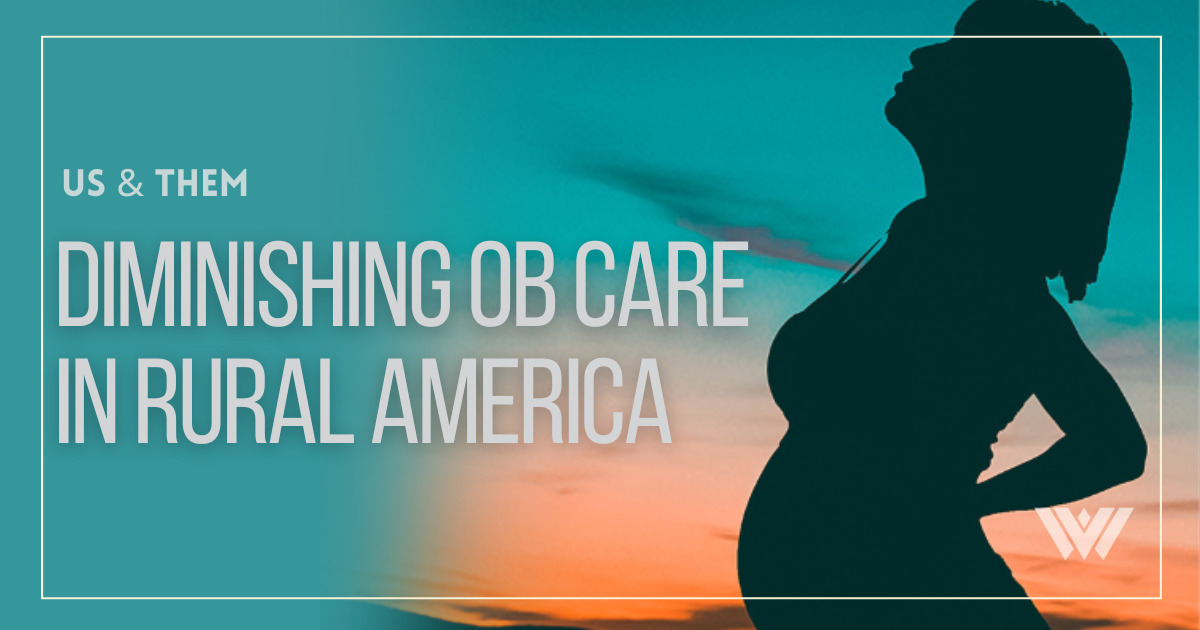Children are the future — it’s a common refrain. However, in isolated, rural communities across America, there are people traveling many miles from their home to deliver babies.
Since 2010, nearly 150 rural hospitals have shut down — a victim of the financial stresses facing U.S. health care. One survey finds that about 40 percent of rural hospitals lose money offering obstetric care, since it costs $18,000 on average to have a baby.
So, when small hospitals look at cost-cutting measures, delivery and obstetrics units are often casualties. Just under 10 percent of rural hospitals have shut down their delivery services.
For this Us & Them episode, host Trey Kay hears from families facing that change, and how it’s affecting prospects for their rural cities and towns.
This episode of Us & Them is presented with support from the West Virginia Humanities Council and the CRC Foundation.
Subscribe to Us & Them on Apple Podcasts, NPR One, RadioPublic, Spotify, Stitcher and beyond.
Amy and Jacob Staton live in Williamson, West Virginia — population 3,000. They love living in the southwest corner of the state. It’s a quiet community for raising their family. They had their first kid in 2014. Two years later, Amy was pregnant again with twins. That made her healthcare a lot more complicated — before and after birth. She faced a greater chance of emergencies — such as possible problems with the placenta or miscarriage. Twins tend to be born premature.
In all of these scenarios — minutes matter.
And in the handful of years between her first and second pregnancies, Amy’s access to obstetric care changed. Williamson Memorial Hospital — five minutes away from her house — stopped offering OB services. The only hospital in the area with a neonatal ICU is located around forty minutes away from the Staton home.
Amy and Jacob are presently expecting their second set of twins.
Dr. Dino Beckett is the CEO of Williamson Health And Wellness Center and a practicing family physician in Williamson, West Virginia. He says when rural hospitals struggle financially, obstetric and prenatal services tend to be some of the first on the chopping block. That’s exactly what happened to Williamson’s hospital in 2014.
“None of us were happy,” Beckett told Us & Them host Trey Kay about the closing of Willamson Memorial Hospital. “Two of my children were born at that hospital. So it was something that we didn’t want to do — but you know, we weren’t the ones calling the shots. And I mean, when you look at it financially, it was just one of the things that — they couldn’t provide other services if they continue to do those and then it would put us at further risk of closure.”
In the following years, 89 rural hospitals across the country closed their obstetric units. And when medical options shrink — families have to make hard decisions about how and where to get care.
Learn more about the Williamson Health and Wellness Center.
Carrie Cochran-McClain has focused on rural health care for 20 years. She’s the policy chief for the National Rural Health Association. And these days, her work puts a spotlight on the medical reality for places like Williamson, West Virginia.
“One of the things about rural health is that it is a microcosm for what we see in our larger healthcare delivery system,” Cochran-McClain explained to Us & Them host Trey Kay.
It’s not like rural America was once overflowing with high-tech labor and delivery units. Cochran-McClain says diminishing access to rural health care fractures something essential to small communities.
Learn more about the National Rural Health Association.
